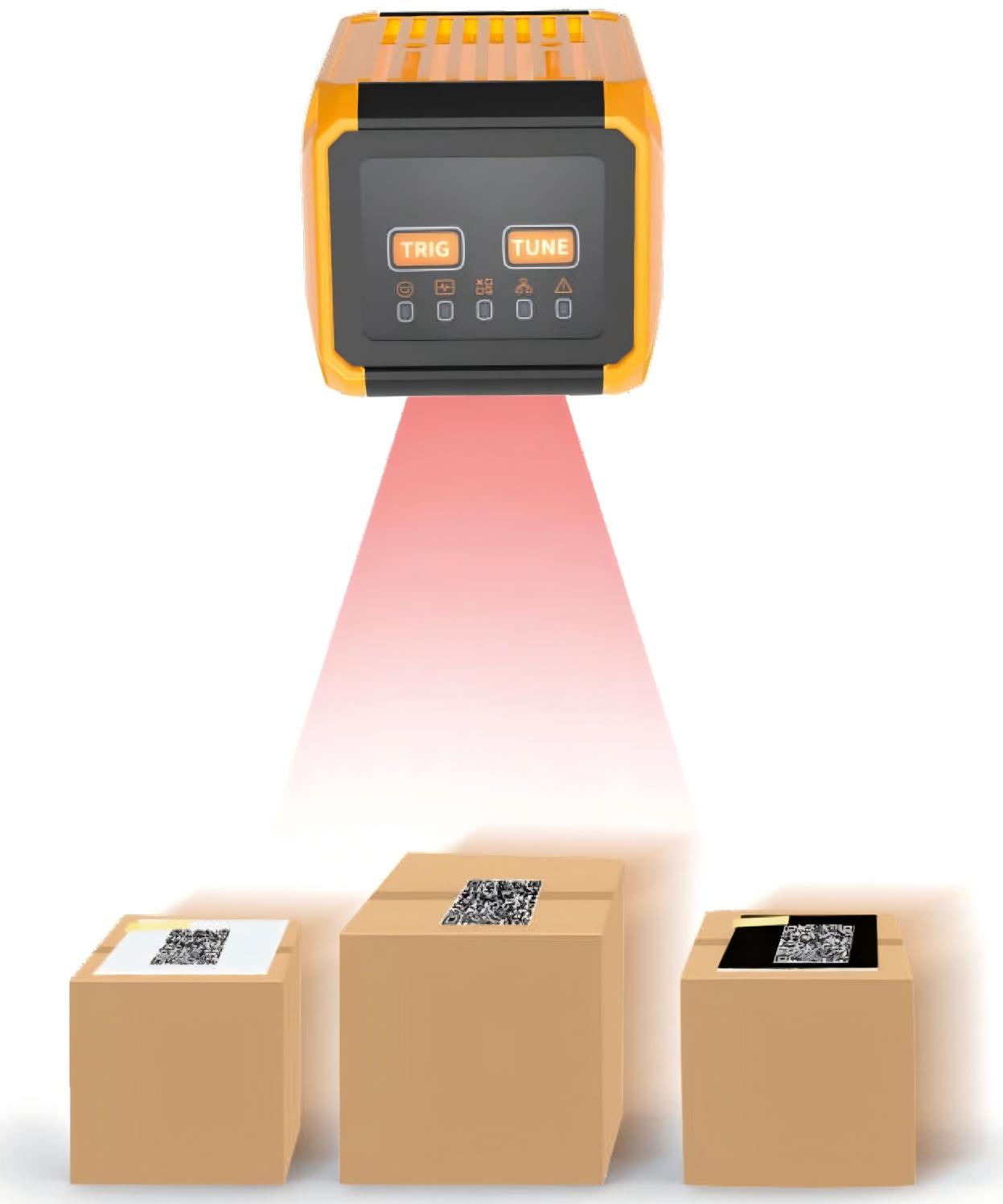Smart Code Reader Sensors: The Core Enabler of Industry 4.0
2025.03.22
In the wave of smart manufacturing and Industry 4.0, smart code reader sensors play an indispensable role. As key devices for data acquisition and recognition, they are deeply integrated into production lines, logistics tracking, and quality control, driving the manufacturing industry toward greater efficiency and intelligence.

I. Technological Evolution in Industry 4.0: Core Advantages of Smart Code Reader Sensors
The technological advancements of smart code reader sensors in the Industry 4.0 era are reflected in the following aspects:
High-Performance Decoding Algorithms & Deep Learning Chips
Equipped with proprietary advanced sampling technology and millisecond-level decoding algorithms, combined with high-performance deep learning chips, smart code reader sensors achieve fast and accurate barcode recognition even in complex environments (e.g., damaged codes, low contrast). This combination not only enhances recognition efficiency but also improves adaptability to varying conditions.
Flexible Lighting System & Automatic Mechanical Focusing
With four independently controlled lighting sources offering red/white light options and supporting 16 lighting schemes, these sensors adapt to various lighting conditions. Additionally, automatic mechanical focusing accommodates different installation spaces, enhancing device flexibility and practicality.
Multi-Core Processors & Robust Networking Capabilities
Featuring Cortex quad-core processors, smart code reader sensors deliver superior decoding speed and performance. They support multi-device networking, aggregating data to a central system for unified transmission, enabling real-time data sharing and collaborative processing in industrial environments.
II. Application Scenarios in Industry 4.0: Empowering Multiple Industries
Smart code reader sensors find extensive applications across various sectors in Industry 4.0, including:
Smart Manufacturing & Automated Production Lines
In smart manufacturing, these sensors collect real-time barcode data from products, enabling automated process monitoring and traceability. For example, in automotive engine assembly lines, they precisely identify QR codes on components, ensuring traceability of each engine part back to its batch and supplier.
Logistics & Warehouse Management
In the logistics and warehousing sector, smart code reader sensors integrate with warehouse management systems to facilitate automatic inbound and outbound tracking. Upon scanning barcodes on packages or products, the system updates inventory status automatically, reducing manual entry errors and enhancing efficiency.
Quality Control & Anti-Counterfeiting Traceability
During quality control, these sensors track the status of each product throughout the production process, providing critical data for quality assurance. In industries such as food and pharmaceuticals, they ensure robust traceability and management to uphold product safety and regulatory compliance.
III. Future Trends in Industry 4.0: Innovation in Smart Code Reader Sensors
Looking ahead, smart code reader sensors will evolve along the following trajectories:
Intelligent & Multi-Functional Capabilities
Next-generation smart code reader sensors will feature enhanced data processing power and algorithms, enabling more efficient self-learning and automation. Multi-functional integration will become a market trend, with sensors incorporating scanning, temperature monitoring, humidity detection, and other features to expand their applications.
Eco-Friendly & Sustainable Development
With growing environmental awareness, green manufacturing is becoming a priority. Smart code reader sensors will adopt eco-friendly designs and materials to minimize energy consumption and environmental impact during operation.
Deep Integration & Collaborative Connectivity
Driven by IoT advancements, smart code reader sensors will achieve deep integration and interconnectivity with other smart devices. By building intelligent factories and digital supply chains, they will further accelerate the transformation of the manufacturing industry towards intelligence and connectivity.
Conclusion
As a core enabler of Industry 4.0, smart code reader sensors provide powerful support for industrial transformation with their high performance, flexibility, and reliability. With ongoing technological advancements and expanding application scenarios, these sensors will play an increasingly vital role in promoting intelligent, sustainable, and interconnected manufacturing. For manufacturing enterprises, understanding the technological trends and applications of smart code reader sensors is key to achieving intelligent transformation and industrial upgrading.
Related Products
+86 18188641602

